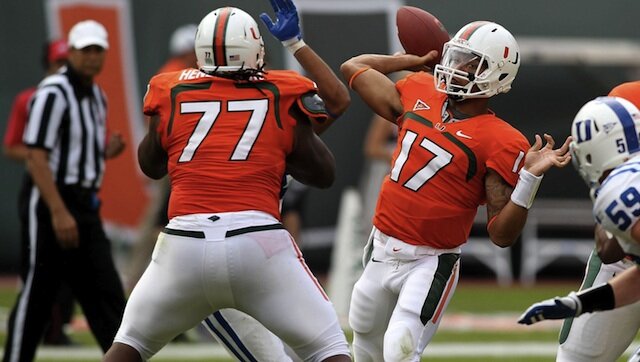What student debt? How the other millennials think about money
By Beth Pinsker
NEW YORK (Reuters) - When Josh McFarland graduated from Stanford he owed $40,000 in student loans and couldn't fathom a way he'd ever pay it off and have a future for himself - not unusual for the typical young adult these days. Then he went to work for Google.
As a product manager, he got stock options and cashed them in over the five years he worked there. He married a fellow Google employee, so she had stock too. Then she moved on to Yelp, and he quit to launch TellApart, which provides technology solutions for e-commerce sites.
Now 33, McFarland has a 3-year-old and a newborn and no longer has to think about his student loan: His company has $17.75 million in venture capital investment. While he doesn't consider himself retire-now rich, his piece of the company affords him what he calls "breathing room" and what other people might call wealth.
McFarland is on the starting end of Generation Y, the cohort born in the United States after 1980 that is typically portrayed as saddled with massive student debt, underemployed and underpaid. More than a third of the 80 million group of so-called millennials live with their parents, according to the Pew Research Group.
But McFarland is part of the sizeable minority that is doing quite well: 12 million Gen Y-ers make more than $100,000, according to the Ipsos MediaCT's Mendelsohn Affluent Survey. Many of them, in technology fields, live frugal work-based lifestyles and are not saddled with the six-digit student debt held by doctors and lawyers.
Raised on the Internet and disheartened by having watched the older generations suffer through the tech bubble of 2000 and the recession of 2008, these young adults are viewing their quickly accumulating wealth differently. For one thing, they do not seem as interested in the trappings of wealth, nor are they concerned about stuffing traditional retirement accounts. They see money as a path to career freedom, where they can pick up and start again at will as soon as a more interesting offer comes along.
Increasingly they turn to Web-based wealth management firms or choose do-it-yourself brokerage accounts. Consider the typical clients at Wealthfront, an online investing broker that has amassed $300 million in assets under management by catering to a demographic that is comfortable doing most of their business online. These are people in their early 30s with $100,000 to invest, mostly above and beyond any tax-advantaged retirement plans like 401(k)s and IRAs. Chief Operating Officer Adam Nash estimates that Gen Y techies control about $100 billion in assets.
"The whole idea from the 80s - that you'd make some money and use that money to make more money - this current generation isn't looking at money that way," says Nash. "The typical software engineer isn't dreaming of the day he can quit the rat race. They use their money instead to gain a little bit of control over what they work on and what they do."
INVESTING IN THEMSELVES
The money, when it comes, is for breeding new success, not tucking away until old age. Trip Adler's path is typical: He graduated from Harvard in 2006 with an idea for Scribd, a community-driven e-book publishing platform, and pursued it relentlessly - living with his partners in a tiny apartment in San Francisco on $12,000 in seed funding from the venture capital fund Y Combinator. Scribd took off and now has millions of dollars in funding and deals with major publishers.
Adler, 29, who has profited nicely from all of this, says his biggest splurge is probably angel investing, mostly in companies his friends are starting. "Probably one in five will be a good payoff, but that will pay off the rest. The amount of money being lost is small," he says.
For TellApart's McFarland, long-term planning also focuses on entrepreneurship. He considers himself a terrible stock investor but a good businessman, and intends to make the bulk of his money by developing great companies. (For that reason he's reluctant to start so much as a college-savings plan for his kids, though his wife disagrees.) What he does squirrel away he wants in low-cost index funds, managed as minimally as possible. He is a Wealthfront client.
For the financial firms handling the core of Gen Y's wealth, this no-fuss attitude can present a challenge. Merrill Lynch private banking wealth adviser Rich Hogan says his clients have their own interests to pursue - especially focusing on green technologies and doing social good with their investing - and do not necessarily focus first on performance.
NOT THAT INTO STUFF
These children of the boom 90s also aren't so into conspicuous consumption. "Where I grew up, if you had money, you spent it on toys - all-terrain vehicles, McMansion, and all this stuff," says McFarland. He doesn't think his peers have the same appetite, and says his biggest splurge currently is a night nanny to help with the new baby.
Adler still drives his mom's old car and has only recently stepped up to rent his own apartment. "I don't really have ambitions to make a lot of money just to spend it," he says.
Merrill Lynch's Hogan says this echoes what he hears from his ultra-high-net-worth Gen Y clients. They don't even want to buy houses, because they don't have the time or desire to take care of them.
Where the wealthy young are spending their cash is on experiences - food, wine, even intergalactic travel. Hogan says more than a few of his clients have bought seats on the Virgin spaceship at a couple of hundred thousand dollars a pop. "Those are the kind of cool things that they think about. It's discretionary income to somebody with millions," he says.
Wade Eyerly, 33, has built a millennial-run startup around providing such luxury experiences with SurfAir, which rents out seats on a fleet of private jets. "The thing that sets the millennials apart is travel patterns. They think nothing of going to from Los Angeles to San Francisco for a few hours and then coming back," he says.
Also, there's a bit of a focus on cars, but in a smart way. Merrill Lynch's Hogan says, "I had a client come in and say that he bought a Tesla car - but he had also bought shares in the company. And he told us that he made enough profit on the shares to cover the cost of the car."
(Follow us @ReutersMoney or at http://www.reuters.com/finance/personal-finance. Editing by Linda Stern and Prudence Crowther)
Source: http://news.yahoo.com/student-debt-other-millennials-think-money-140247480.html
Flossie Amanda Berry huntington beach Johnny Manziel Reza Aslan Gold Cup final Brickyard 400



 ) and back in 2006 I had a bilateral carpal tunnel release, as well as a first dorsal tendon release on my left hand.
) and back in 2006 I had a bilateral carpal tunnel release, as well as a first dorsal tendon release on my left hand.


